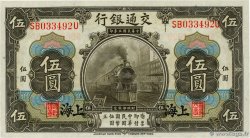Live auction - bry_942325 - HENRY II Teston à la tête nue, 1er type 1553 Poitiers
You must signin and be an approved bidder to bid, LOGIN TO BID. Accounts are subject to approval and the approval process takes place within 48 hours. Do not wait until the day a sale closes to register. Clicking on "BID" constitutes acceptance of the terms of use of cgb.fr private live auctions.
Bids must be placed in whole Euro amounts only. The sale will start closing at the time stated on the item description; any bids received at the site after the closing time will not be executed. Transmission times may vary and bids could be rejected if you wait until the last second. For further information check the Live auction FAQ
All winning bids are subject to a 18% buyer’s fee.
All winning bids are subject to a 18% buyer’s fee.
| Estimate : | 200 € |
| Price : | no bid |
| Maximum bid : | no bid |
| End of the sale : | 20 August 2024 16:14:41 |
Type : Teston à la tête nue, 1er type
Date: 1553
Mint name / Town : Poitiers
Quantity minted : 75735
Metal : silver
Millesimal fineness : 898 ‰
Diameter : 30,5 mm
Orientation dies : 8 h.
Weight : 9,44 g.
Coments on the condition:
Ce teston est frappé sur un flan assez large et irrégulier présentant de petits éclatements. Patine grise. Monnaie ayant été nettoyée et présentant quelques hairlines
Catalogue references :
Obverse
Obverse legend : HENRICVS. II. D. G. FRANC. REX.
Obverse description : Buste de Henri II à droite, la tête nue, avec une cuirasse cloutée.
Obverse translation : (Henri II, par la grâce de Dieu, roi des Francs).
Reverse
Reverse legend : + XPS. VINCIT. XPS. REGNAT. XPS. IMPE. 1553 (MM).
Reverse description : Écu de France couronné accosté de deux H couronnées ; G à la pointe de l'écu.
Reverse translation : (Le Christ vainc, le Christ règne, le Christ commande).








 Report a mistake
Report a mistake Print the page
Print the page Share my selection
Share my selection Ask a question
Ask a question Consign / sell
Consign / sell
 Full data
Full data










